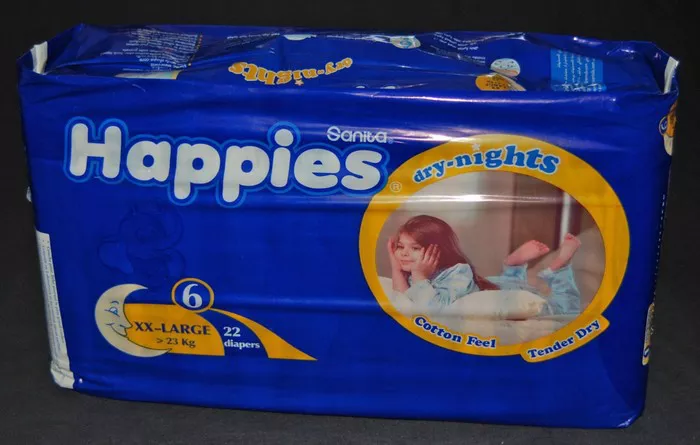In the realm of parenting, few topics are as pressing and omnipresent as diaper management. New parents are often inundated with questions about diaper changing frequency, diaper sizes, and most crucially, diaper absorbency. One of the most common queries that arise is, “How many pees can a diaper hold?” This question delves into the heart of diaper functionality and the science behind absorbent materials. In this article, we will explore the factors influencing diaper absorbency, methods for measuring it, and practical tips for ensuring optimal diaper performance.
The Science of Diaper Absorbency
Diapers, whether disposable or cloth, rely on absorbent materials to contain and retain liquid waste. The primary function of a diaper is to absorb urine quickly and efficiently, keeping the baby’s skin dry and minimizing the risk of irritation and diaper rash. To achieve this, modern diapers utilize a combination of materials such as superabsorbent polymers (SAP), wood pulp, and synthetic fibers.
Superabsorbent polymers are the cornerstone of diaper absorbency. These polymers have an exceptional capacity to absorb and retain liquid, many times their own weight. When urine comes into contact with the SAP in a diaper, it forms a gel-like substance, effectively trapping the liquid and preventing leakage. This mechanism allows diapers to hold multiple voids before reaching their saturation point.
Factors Affecting Diaper Absorbency
Several factors influence the absorbency of a diaper, including its size, design, materials used, and the baby’s urine output. Understanding these factors is essential for choosing the right diaper and managing diaper changes effectively.
1. Size and Fit: A properly fitting diaper is crucial for optimal absorbency. Diapers that are too small may leak, while those that are too large may not provide adequate coverage, leading to potential leaks and discomfort for the baby.
2. Absorbent Materials: The quality and quantity of absorbent materials in a diaper significantly impact its absorbency. High-quality diapers typically contain a higher concentration of superabsorbent polymers, enhancing their ability to hold urine.
3. Urine Output: The frequency and volume of a baby’s urination vary depending on factors such as age, diet, and hydration level. Babies tend to urinate more frequently in the first few months of life, gradually decreasing as they grow older. Diapers must be able to accommodate these fluctuations in urine output.
4. External Factors: Environmental conditions, such as temperature and humidity, can affect diaper performance. High temperatures may accelerate urine evaporation, while humid conditions can hinder absorption, potentially leading to leaks.
Measuring Diaper Absorbency
Determining the exact number of pees a diaper can hold is a complex task due to the variability of factors involved. However, there are standardized methods for evaluating diaper absorbency in laboratory settings.
1. Total Absorbency Capacity (TAC): TAC is the maximum amount of liquid a diaper can hold before reaching its saturation point. This measurement is typically expressed in milliliters (ml) or grams (g) of liquid. Manufacturers conduct TAC tests using standardized procedures to assess the absorbency of their products accurately.
2. Rewet Performance: Rewet performance refers to the ability of a diaper to keep the baby’s skin dry after absorbing urine. High-quality diapers minimize rewetting by effectively locking moisture away from the skin, reducing the risk of diaper rash and irritation.
3. Leakage Tests: Leakage tests simulate real-world conditions by subjecting diapers to varying levels of liquid load and pressure. Diapers are evaluated based on their ability to contain urine without leaking, both when dry and at full capacity.
Practical Tips for Maximizing Diaper Absorbency
While understanding the science behind diaper absorbency is essential, parents also need practical strategies for ensuring maximum performance. Here are some tips for optimizing diaper absorbency:
1. Choose the Right Size: Select diapers that fit your baby snugly without being too tight or too loose. Proper sizing ensures adequate coverage and prevents leaks.
2. Change Frequently: Although modern diapers have impressive absorbent capabilities, it’s essential to change them regularly to maintain hygiene and prevent skin irritation. Aim for changing diapers every 2-3 hours or more frequently if necessary.
3. Overnight Protection: For overnight use, consider using overnight diapers specifically designed for extended wear. These diapers typically have higher absorbency and extra leak protection to keep your baby dry and comfortable throughout the night.
4. Diaper Booster Pads: Diaper booster pads are additional absorbent layers that can be inserted into a diaper to increase its capacity. These pads are especially useful for heavy wetters or during long outings when immediate diaper changes may not be feasible.
Conclusion
In the realm of parenting, understanding diaper absorbency is paramount for ensuring the comfort and well-being of infants and toddlers. While the exact number of pees a diaper can hold may vary depending on numerous factors, including size, design, and materials, parents can take practical steps to maximize absorbency and minimize leaks. By choosing the right diaper size, changing diapers frequently, and considering supplementary products like overnight diapers and booster pads, parents can navigate the world of diapering with confidence and ease.


